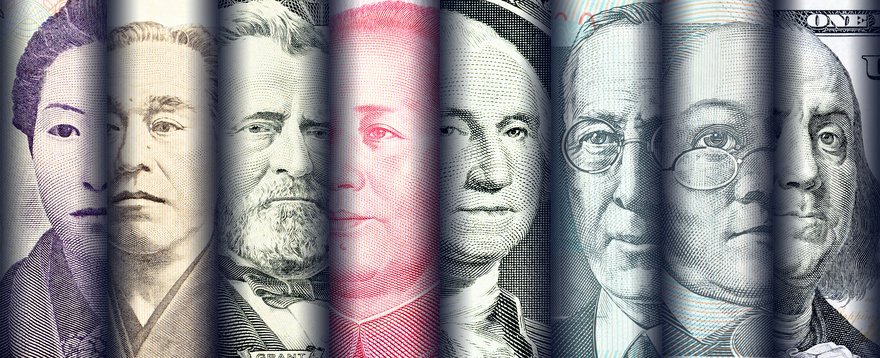Learn how to interpret a foreign exchange quote, and how to think about gains and losses with examples.

The currency market is very different from any other financial market. Whereas an investment in a stock is a bet on a company, a foreign exchange position is a bet on the value of one currency relative to another currency.
For instance, if you think the euro will rise in value, you can’t simply buy euros. You have to find another currency against which you think the euro will appreciate. Thus, you might buy EUR/USD, which is effectively a bet that the euro will appreciate in value against the U.S. dollar.

Image source: Getty Images.
How to read a quote
How to read a foreign exchange quote
A foreign exchange pair is made up of two parts. The base currency is listed first. The quote currency is listed second. Thus, in the case of EUR/USD, the euro is the base currency and the U.S. dollar is the quote currency.
As I write this, the quote for EUR/USD is 1.0884. This means that one euro is currently worth 1.0884 U.S. dollars.
Calculate gains and losses
How to calculate gains and losses
The foreign exchange market is one of the most liquid and most important markets in the world. Currencies, especially those of major world powers, tend to move very little from day to day and year to year.
Gains and losses are thus calculated in “pips,” or percentages in points. In simple terms, a pip is the fifth digit in a foreign exchange quote. It is traditionally the smallest unit of measurement in foreign exchange.
- Suppose EUR/USD moves from 1.0884 to 1.0984. This would be described as a 100-pip movement (1.0984-1.0884 =0.0100).
- Suppose USD/JPY (the Japanese yen) falls from 117.83 to 116.83. This is also a 100-pip movement (117.83-116.83 = 1.00) because the price changed by 100 of the smallest unit (0.01 for this pair).
Steps for calculating
Calculating gains and losses in pips and dollars and cents
Here are a couple of examples to show the steps for calculating foreign exchange gains and losses.
We’ll first assume that we think the value of the euro will rise against the U.S. dollar. Thus, we buy 100,000 units of EUR/USD at the price of 1.1000. To complete this trade, we are effectively buying 100,000 euros at the price of 110,000 U.S. dollars.
Let’s say the pair rises 100 pips to 1.1100.
The 100,000 euros we purchased are now worth 111,000 U.S. dollars. Once we subtract the 110,000 U.S. dollars we invested, we’re left with a profit of $1,000.
Each pip is thus worth $10 each.
Alternatively, suppose we think the value of the euro will decline against the U.S. dollar. We sell 100,000 units of the EUR/USD pair, effectively exchanging 100,000 euros to buy dollars. The 100,000 euros will buy $110,000 U.S. dollars at the quoted exchange rate (100,000*1.1000 = $110,000).
Let’s assume the market moves in our favor. EUR/USD falls 200 pips to 1.0800.
We can exit this position at a profit. The 110,000 U.S. dollars we own are converted back into euros at the new exchange rate of 1.0800 dollars per euro. The 110,000 U.S. dollars convert back into 101,851.85 euros at the new exchange rate. Subtract the 100,000 euros it cost to open the trade to get a profit 1,851.85 euros.
The 1,851.85-euro profit must be converted back to dollars at the current exchange rate of 1.0800. Multiply your profit in euros (1,851.85) by the exchange rate (1.0800) to get $2,000 of profit. Given the pair moved by 200 pips, we know that each pip is thus worth $10.
Related investing topics
Though the math may appear intimidating at first, calculating gains and losses in foreign exchange is as simple as converting one currency into another currency over and over again. After all, that’s all foreign exchange trading is — selling one currency for another currency at the current rate, hoping that in the future you’ll be able to convert the currency back at a more favorable rate, creating a profit.
And speaking of profit, if you’re ready to get started investing, whether it’s in domestic or foreign stocks, we’re here to help. Head on over to our Broker Center, and we’ll help you get started on your investing journey.
This article is part of The Motley Fool’s Knowledge Center, which was created based on the collected wisdom of a fantastic community of investors. We’d love to hear your questions, thoughts, and opinions on the Knowledge Center in general or this page in particular. Your input will help us help the world invest, better! Email us at [email protected]. Thanks — and Fool on!


